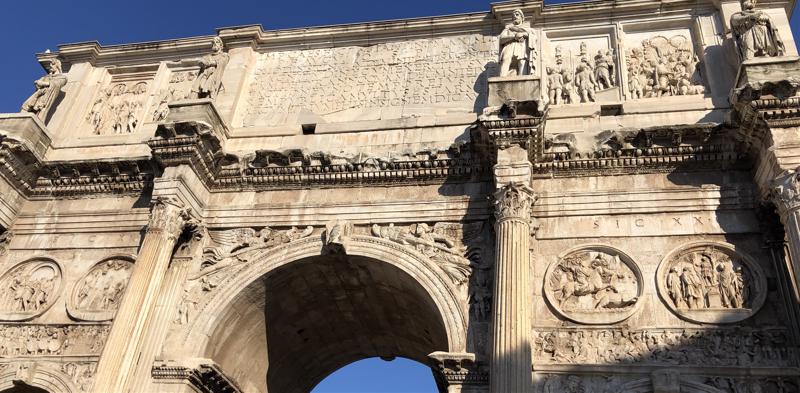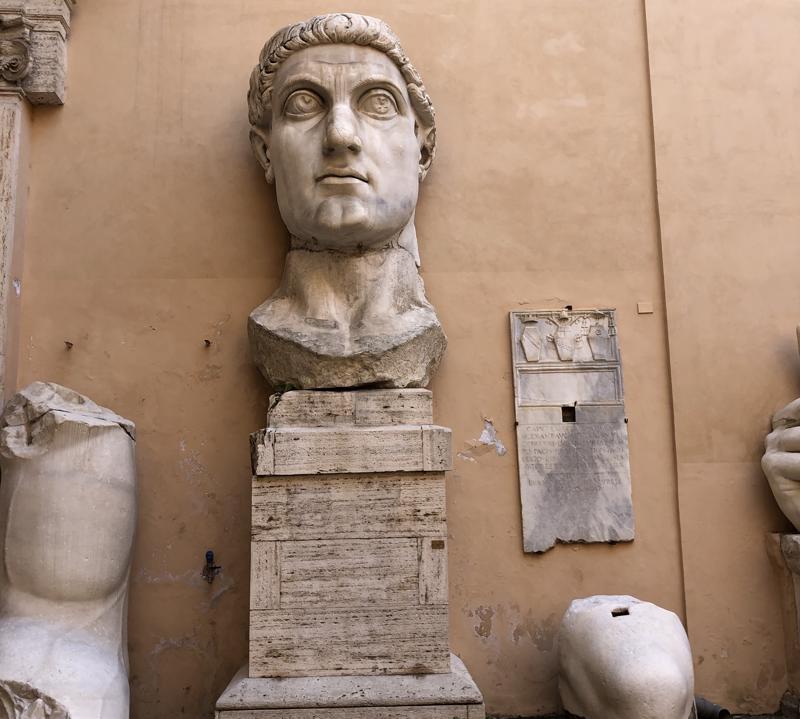Rome 2019
The Arch of Constantine, centrally located between the Colosseum and Palatine Hill, is a triumphal arch built to commemorate Constantine's victory at the Milvian Bridge. The arch was used, like Trajan’s Column, as a trophy of war depicting his conquests. Military parades would pass through the arch before marching down the Via Sacra in the Roman Forum which led to the Temple of Jupiter. The Arch is important because it is a great example of the prevalence of reappropriation in Rome. Most of the reliefs on the arch are reused. This signifies the decline of Greco-Roman art in the empire. The arch includes statues of prisoners in a non-idealized form at the top of the arch to act as trophies of his conquests. Constantine is very significant in that he legalized Christianity in 313 AD with the Edict of Milan. He also moved the capital of the Roman Empire east to Byzantium.
lholbroo
12 chapters
16 Apr 2020
Constantine
Rome, Italy
The Arch of Constantine, centrally located between the Colosseum and Palatine Hill, is a triumphal arch built to commemorate Constantine's victory at the Milvian Bridge. The arch was used, like Trajan’s Column, as a trophy of war depicting his conquests. Military parades would pass through the arch before marching down the Via Sacra in the Roman Forum which led to the Temple of Jupiter. The Arch is important because it is a great example of the prevalence of reappropriation in Rome. Most of the reliefs on the arch are reused. This signifies the decline of Greco-Roman art in the empire. The arch includes statues of prisoners in a non-idealized form at the top of the arch to act as trophies of his conquests. Constantine is very significant in that he legalized Christianity in 313 AD with the Edict of Milan. He also moved the capital of the Roman Empire east to Byzantium.

The Colossus of Constantine statue, now located in the Musei Capitolini, was originally located at the Basilica of Maxentius and Constantine located in the Roman Forum. The huge size of both the basilica and the statue, along with its prominent location in the Forum, shows the power and influence of Constantine during his reign. The colossus exemplifies the importance of symbolism in art at the time. This is done with exaggerated features, such as Constantine’s large eyes that symbolize the wisdom of God within him. The size alone shows his power and promotes a sense of respect and awe.

Share your travel adventures like this!
Create your own travel blog in one step
Share with friends and family to follow your journey
Easy set up, no technical knowledge needed and unlimited storage!
© 2025 Travel Diaries. All rights reserved.